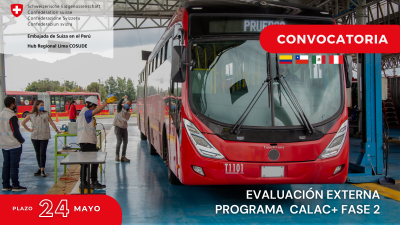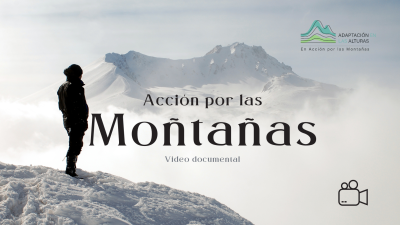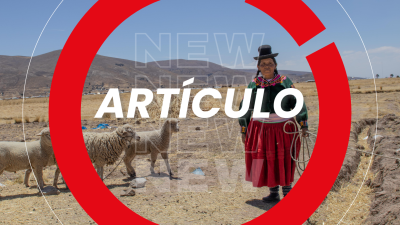Over the past 30 years, 996 lakes and lagoons have been formed of glacier origin. The Glaciology and Hydrology Unit of Peru has determined that this figure will increase over the next years by 201 lagoons of about 1 hectare.
The tropical glaciers located in the Andes mountain range play an important role in understanding the world climate system and its changes. Around 71% of these tropical glaciers are located in Peru, where the glacier area has experienced a decrease above the average of the world glacier retreat.
Glacier retreat often causes the formation of lagoons that may be unstable and may cause natural disasters, such as floods. In turn, glaciers are a source of water during the dry season; this water is used both in agriculture and in the production of energy, water supply and others. This accelerated retreat will imply lower and less continued water offer, particularly during the dry season, which gives us an outlook that generates significant changes in the life of the people and requires strategic investment towards adequately adapting to a new context.
In the Cuzco region, the Urubamba mountain range has 117 glaciers and the Vilcanota range, 374. In 39 years, the glacier surface of these ranges has reduced by 61% and 33% respectively.
In this scenario, since 2012 the Glaciares+ Project pursued the building and strengthening of capacities to adapt to climate change and to reduce risks associated to glacier retreat in 3 areas of the Cuzco region – Santa Teresa (from 2012 to 2015) and Pitumarca and Urubamba (from 2015 to 2018) – to take hold of the opportunities to manage their water resources.
During the event that closed the second stage of the Project, several local and regional actors highlighted the achievements and experience obtained by the project in Cuzco these past 7 years. In a first block called “Sharing achievements and experience”, representatives from the Phinaya-Pitumarca community, San Isidro de Chicón – Urubamba and the district of Santa Teresa underscored mainly the strengthening of capacities to adapt to climate change, disaster risk management and comprehensive water resources management through educational events that used local and ancient knowledge as basis for the subsequent implementation of initiatives such as the construction of rustic dikes in periglaciation lagoons and the protection of springs in the district of Pitumarca, the protection of headwaters through the installation of wire mesh fencing across 800 linear meters and the implementation and management of the community forest nursery in the community of San Isidro de Chicón and, finally, actions for reforestation and recovery of wetlands to increase water resources, as well as the promotion of producer associations to sell local products such as granadilla, avocados and coffee in the district of Santa Teresa.
 |
 |
| Panel 1 | Panel 2 |
Research conducted for the Glaciares Project was a key component and the representative of the Research and Climate Change Center of the UNSAAC recognized the contribution of the Project through the strengthening of professional and scientific relations between the UNSAAC and Swiss Scientific Entities in glaciology matters, including the consolidation of the Master’s Degree in Climate Change and through Sustainable Development and the active research by UNSAAC academia, with own scientific glaciology-related projects.
In the second block, called “Commitments towards sustainability”, representatives from allied institutions such as the Administrative Water Authority Xii-UV, INAIGEM, CENEPRED, EGEMSA, CORECC and the Municipality of Pitumarca, recognized that climate change is a vital factor to be considered for development. In this respect, they emphasized the achievements reached in regional institutional strengthening through the Regional Climate Change Council (CORECC) the Glaciology Platform and the Multipurpose Project Work Group, spaces of vital importance to place in the public agenda climate change issues and, as first priority, the consolidation of water resources. They also made emphasis on the formulation of management tools with an approach to climate change and disaster risk management. The different institutions present pledged to continue promoting the processes endorsed by the Glaciares+ Project, realizing the great opportunities that lie in research and multipurpose projects to bolster optimal development in the region.
 |
 |
|
Lucía Ruiz, Viceminister of Strategic Development of Natural Resources of the Ministry of the Environment |
Karen Price, Coordinator of the Glaciares+ Project |
Lucía Ruiz Ostoic, Viceminister of Strategic Development of Natural Resources of the Ministry of the Environment expressed her feelings of pride and emotion when she listened to the testimonies of the work promoted in the region and encouraged them to continue joining efforts towards adapting to climate change, which is already here. She also highlighted the inter-institutional and collaborative work that takes place in the region and which sets an example on how climate change should be addressed in the country.
In her closing words, Karen Price, national Project Coordinator expressed her satisfaction for the achievements obtained in these years of work, recognizing, in particular, the example of the investment made in community leaders, who are expected to be the leading players of their own development. She also stressed the importance of research in the making of proper investment decisions and expressed a special recognition for the Swiss Cooperation and its outstanding work in Peru, particularly in Cuzco.
 |
| Jocelyn Ostolaza, National Program Official COSUDE |
Finally, Jocelyn Ostolaza, National Program Official COSUDE, started by recalling the onset of Swiss Cooperation’s work in Cuzco and the great challenges this meant, always considering that climate change not only brings risks, but also opportunities. She highlighted the commitment of Swiss Coopera
tion to continue working on the subject, creating ties with the different players and underscored the great potential of Multipurpose Projects for Cuzco and for all mountainous countries in a climate change context.

For images of the event, please click here
About Glaciares+ ProjectThe Glaciares+ Project received the technical and financial support of the Global Program for Climate Change of the Swiss Agency for Development and Cooperation – COSUDE, executed by the consortium CARE Peru and the University of Zurich, in association with the Ministry of the Environment, the National Water Authority, the National Center for Disaster Risk Estimation, Prevention and Reduction (CENEPRED) the Peruvian Agency for International Cooperation (APCI) and the Ministry of Economy and Finance, as well as partners from the Regional Governments of Ancash, Cuzco and Lima and local authorities.
Related notes:
- Achievements and learnings presented in Cuenca Cañete. Regional Government of Lima, COSUDE by representatives of the Glaciares+ Project Steering Committee
- In Huaraz, representatives of the Glaciares+ Project Steering Committee participate through COSUDE and the National Water Authority in the ceremony that presented achievements and learnings of the Glaciers+ Project
Additional information:
Glaciers Project, project sheet, Swiss Embassy, Swiss Agency for Development and Cooperation COSUDE
Web Glaciers Project Links of interest:
Proyecto Glaciares+ Timeline Video








